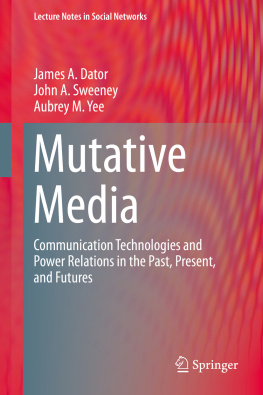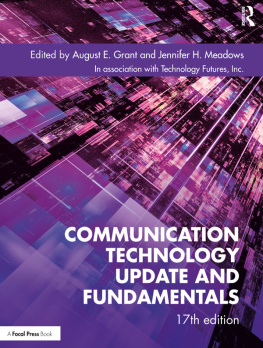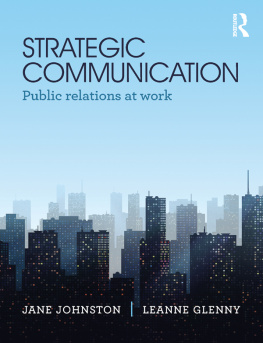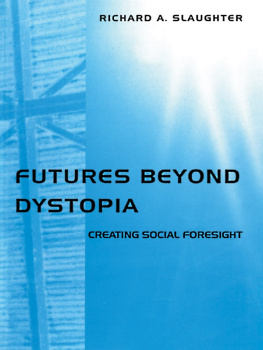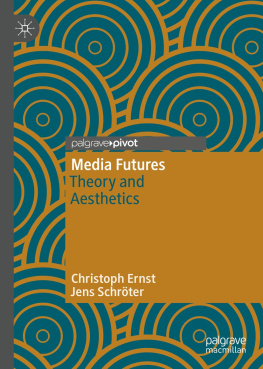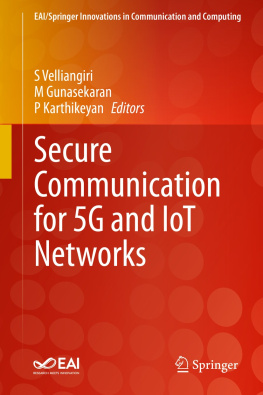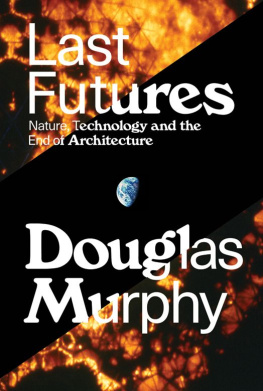1. Technology, Communication, Power, Society, and Change
1.1 Introductory Concepts
Many people in the modern and postmodern worlds are involved with technology in one way or the other. Some love it and cant wait to use the latest gadgets; others profess to hate technology and strive to live their lives free of it, while most simply take the increasingly ubiquitous nature of evermore sophisticated technology as somehow given, inevitable, unproblematic, and natural. Moreover, there is a vast and growing cache of academic literature about the interrelationship between technologies, individuals, societies and environments.
This study seeks to explicate how communication technologies seem to have contributed to changes in the structure of societies, and hence in the distribution of political power, in the past, at present, and in four alternative futures. This is not a collection of detailed case studies. Rather, we have taken a decidedly macro approach and focused on five periods where such influences were likely to have been both substantial and well-documented: during the emergence of language and speech; during the shift from entirely oral to some handwritten communication; in handwritten, scribal societies up to the invention of the printing press and related technologies; from the printing press to electronic communication technologies; and ending with potentially emerging modes of communication.
For information on the past and present, we relied on the extensive and growing literature about the four historical periods. However, since our focus is so wide, our analysis seldom is able to go very deep. Thus, we alternate between broad, sweeping, though often well-documented statements to a few detailed, and indeed sometimes very personal, examples. The latter are especially prevalent once we get to electronic communication technologies that have impacted our daily lives and about which we have shared our speculations publicly before. Our discussion of potential future technologies and impacts is based on theories and methods of futures studies developed over the last 4 decades in the Alternative Futures program of the Department of Political Science of the University of Hawaii at Mnoa, as will be discussed later.
A great deal of our research effort was a survey of the literature on technology per se , and especially on technology as an agent of individual, social, and environmental change. Our intention here is not only to develop a theory of technology and its possible role in such change to guide our own research but also to enable us to refine or reject a tentative theory of technology and technologically induced change that we had developed over previous decades. At the outset we needed to make it clear that our main interest is to learn if, and if so, how, a new level of communication technologies per se serves as an agent of social change. We are only secondarily interested in how the information and ideas promulgated through the new technologies might also cause change. This is a distinction that the Canadian philosopher of media, Marshall McLuhan, intended to highlight by his dictum the medium is the message [].
We discovered in our research not only that many students of communication technologies and social change do not make this distinction clearly, if at all, but also that they more often comment on the substance of the message rather than on the impact of the medium itself. In presenting the results of our research here, we usually rely on scholars who study the impact of new communication technologies per se on modes of thought and behavior, and then try to make the distinction apparent in our discussion of the findings of others. To be sure, it is not always easy or perhaps even possible to unambiguously separate message from medium, but we endeavor to do so, if only to show the ways in which the two are deeply interconnected and, as it were, the immense effect the latter has on the former.
1.2 What Is Technology?
We looked at technology from two perspectives. One perspective follows Charles Singer in his masterful multi-volume work, A History of Technology , that took him 2 decades to complete. He states that technology is best understood as how things are commonly done or made (and) what things are done or made [] wrote: Broadly speaking, technology is the way people do things. (In a certain sense, there is even a technology of prayer.)
As Paul Boyer observes, this definition provides a broader view of technology as ways of making and doing things that, at its most expansive, encompasses all ways of shaping the real worldnatural and socialto human ends. Technology so understood signifies a thoroughly social process that touches all human beings, and whose history is inevitably bound up with questions of power and authority. []
Thus, our definition of technology is how humans do things, or, how humans get things done. The importance and utility of this broad definition will be made apparent later.
The second perspective of our work understands technology as mediaas intermediating processes between whatever objective real world may be out there for humans to perceive and interact with, and our inner consciousness of that world and of ourselves. As Walter Benjamin argues, technology is the mastery not of nature but mastery of the relation between nature and humanity. []. We thus here seek to understand how the media influence our understanding of the world while also influencing our understanding of ourselves, personally and interpersonally.
1.3 Three Views of Technology, Plus One
One of the purposes of our research was to test our long-standing contention that both popular and academic beliefs about technology fall into one of three basic categories. The first widely and often uncritically shared perspective is that technology is neutral . Technology does not impact society in any important way. Technologies can make our lives better, or can be misused to make them worse, this view maintains. It is entirely a question of how humans use technologya matter of human agency and not of any essential feature of technology. This view is well captured by the insistence by many gun enthusiasts in the United States that Guns dont kill people. People kill people. Guns can be used for anything. It is up to humans to decide to use them to kill people or not.
A variation of this view is that while technology is neutral per se , technological research and development aimed at improving the economy and the lives of ordinary humans is a good thing, and should be increased. Technological innovation is routinely said by decision makers worldwide to be essential for national security and individual/national wealth. Most formal education at all levels everywhere presently is aimed at increasing the number and skills of scientists, technologists, engineers, and mathematicians (the so-called STEM academic subjects) and related disciplines so that they can develop new tools for the benefit of humanity. Although any technology can be used for evil, the intention of technologies that are being invented and diffused as a consequence of scientific research are done so in order to improve human welfare and national strength, it is repeatedly said. Many people most directly responsible for the creation and spread of new technologiespolicymakers, financiers, educators, scientists, engineers, designers, entrepreneurs, marketing specialistsespouse this view. Their intentions are noble, they say, and they accept no responsibility for how their creations, intended for good, are subsequently used. Michael Thad Allen and Gabrielle Hecht quote, but do not support, the belief that technology did not inevitably lead to an Orwellian social order, any more than it did to a democratic utopia. [, p. 20]

